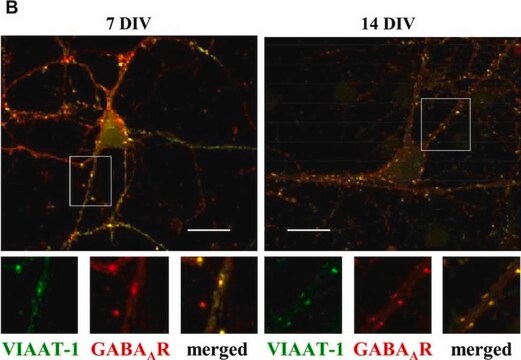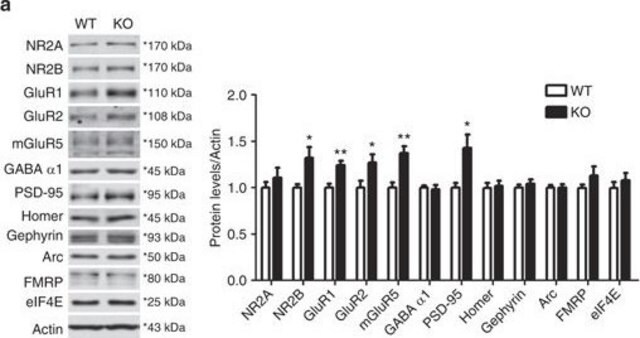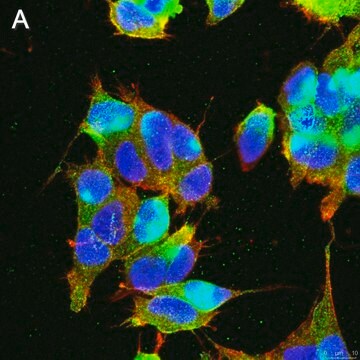05-474
Anti-GABA A Receptor β2/3 Antibody
clone 62-3G1, Upstate®, from mouse
Sinónimos:
GABA(A) receptor subunit alpha-1, gamma-aminobutyric acid (GABA) A receptor, alpha 1, gamma-aminobutyric acid A receptor, alpha 1
About This Item
Productos recomendados
origen biológico
mouse
Nivel de calidad
forma del anticuerpo
purified antibody
tipo de anticuerpo
primary antibodies
clon
62-3G1, monoclonal
reactividad de especies
rat, bovine, human
fabricante / nombre comercial
Upstate®
técnicas
immunohistochemistry: suitable
immunoprecipitation (IP): suitable
western blot: suitable
isotipo
IgG
Nº de acceso UniProt
Condiciones de envío
wet ice
modificación del objetivo postraduccional
unmodified
Información sobre el gen
human ... GABRA1(2554)
Descripción general
Especificidad
Inmunógeno
Aplicación
Immunohistochemistry: This antibody has been reported to detect the GABAA Receptor β2 and β3 subunits in paraffin embedded and frozen rat brain sections which had been fixed with 4% paraformaldehyde or 0.1% glutaraldehyde and permeabilized with Triton X-100.
Neuroscience
Neurotransmitters & Receptors
Calidad
Western Blot Analysis: 0.5-2 μg/mL of this antibody detected the GABAA Receptor β2 and β3 subunits from 20 μg of rat brain microsomal preparation (Catalog # 12-144).
Descripción de destino
Forma física
Almacenamiento y estabilidad
Nota de análisis
Brain tissue
Otras notas
Información legal
Cláusula de descargo de responsabilidad
¿No encuentra el producto adecuado?
Pruebe nuestro Herramienta de selección de productos.
Opcional
Código de clase de almacenamiento
10 - Combustible liquids
Clase de riesgo para el agua (WGK)
WGK 1
Certificados de análisis (COA)
Busque Certificados de análisis (COA) introduciendo el número de lote del producto. Los números de lote se encuentran en la etiqueta del producto después de las palabras «Lot» o «Batch»
¿Ya tiene este producto?
Encuentre la documentación para los productos que ha comprado recientemente en la Biblioteca de documentos.
Nuestro equipo de científicos tiene experiencia en todas las áreas de investigación: Ciencias de la vida, Ciencia de los materiales, Síntesis química, Cromatografía, Analítica y muchas otras.
Póngase en contacto con el Servicio técnico







